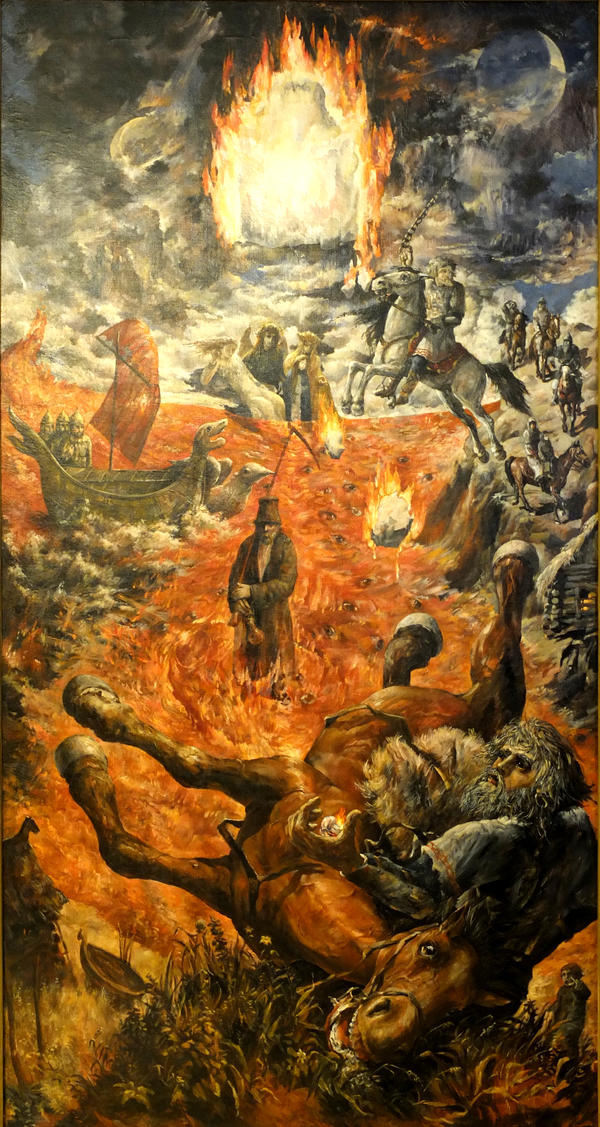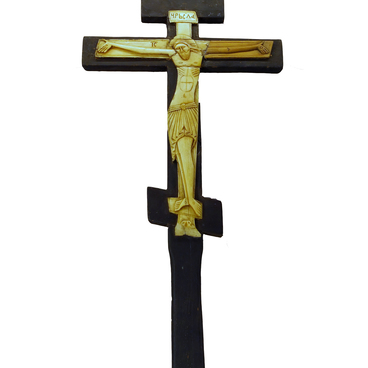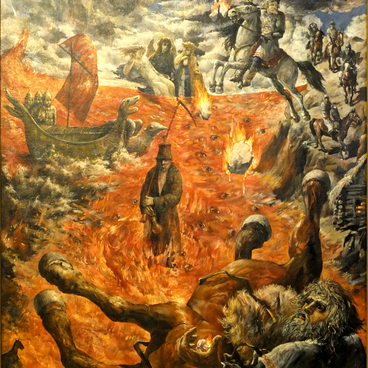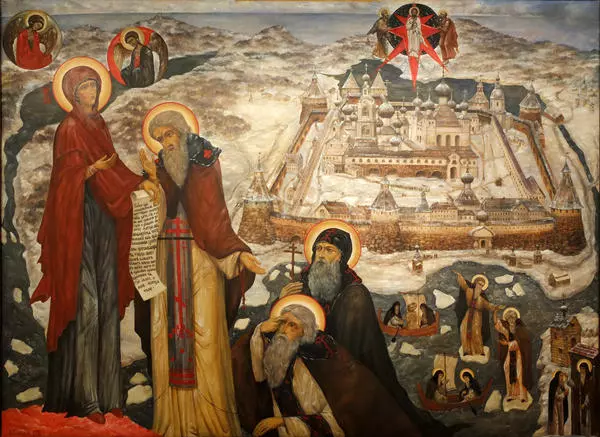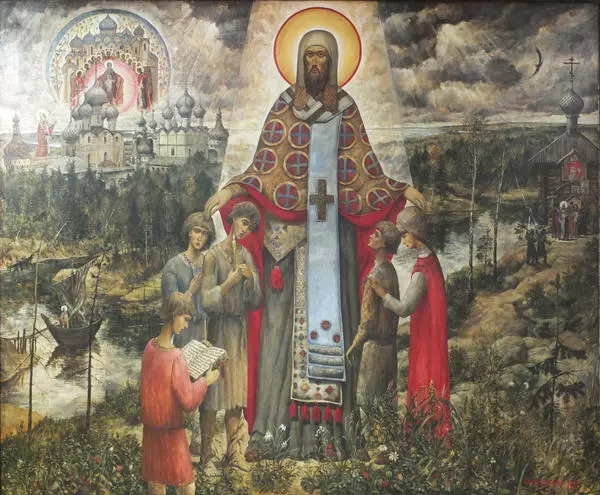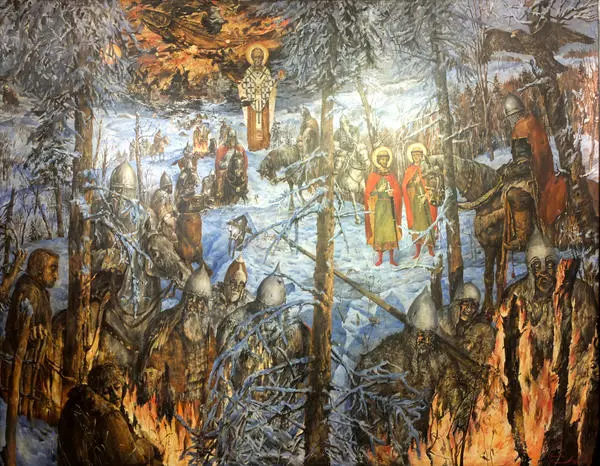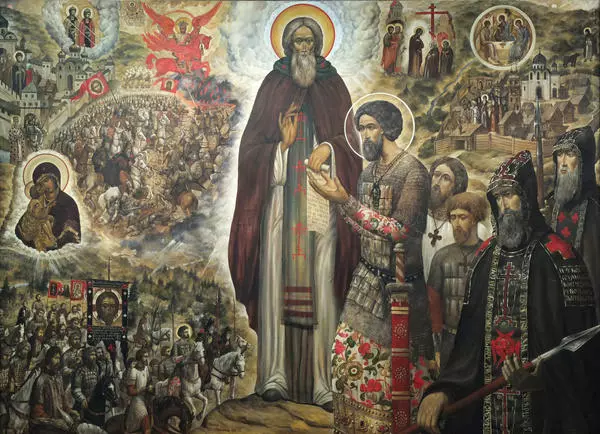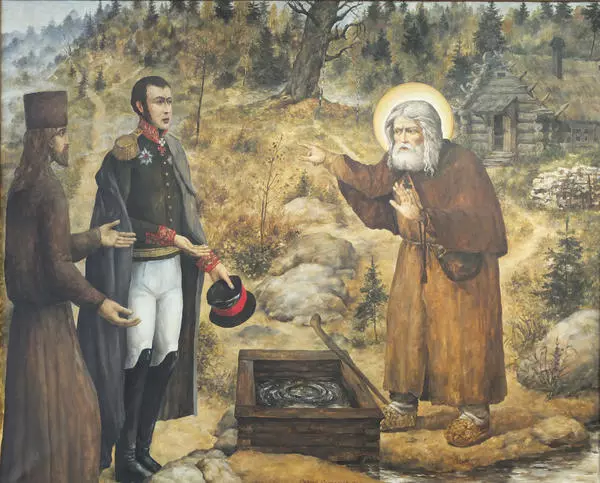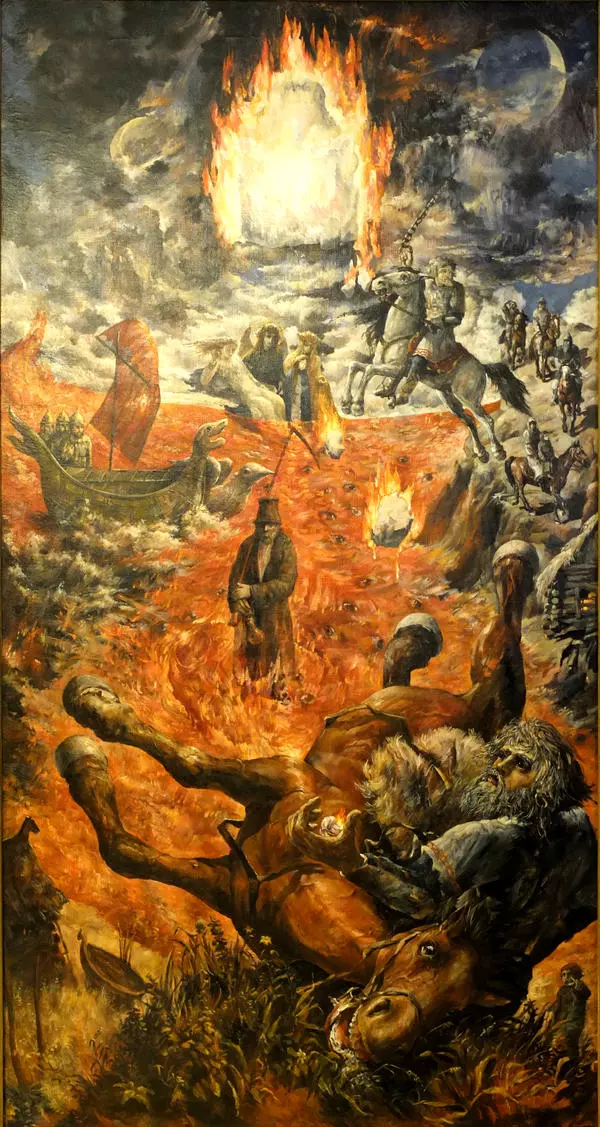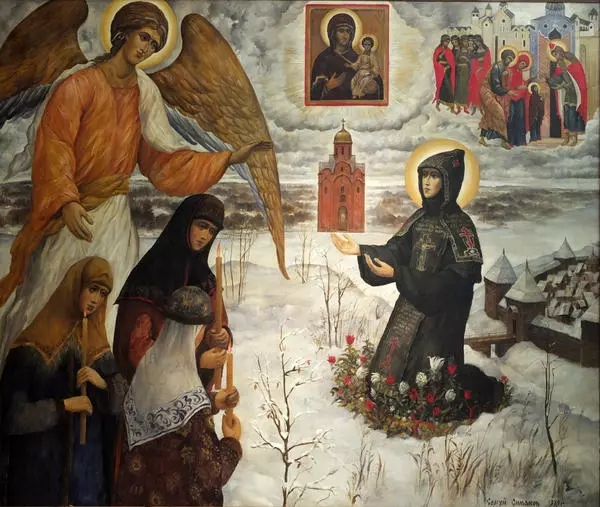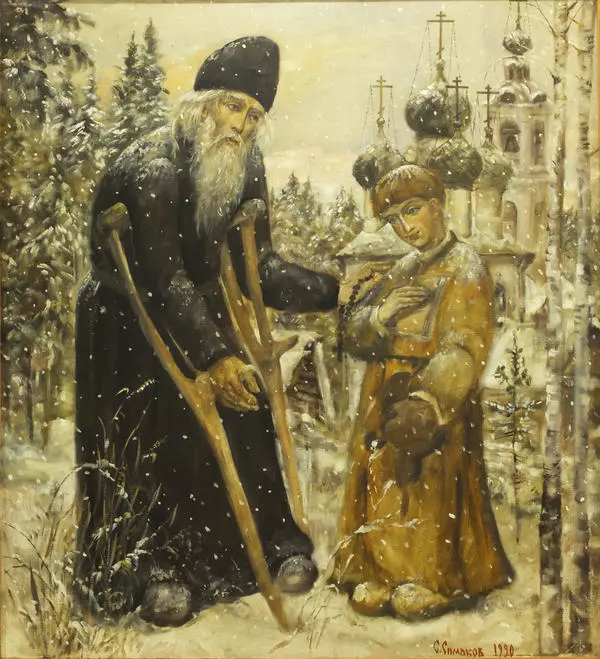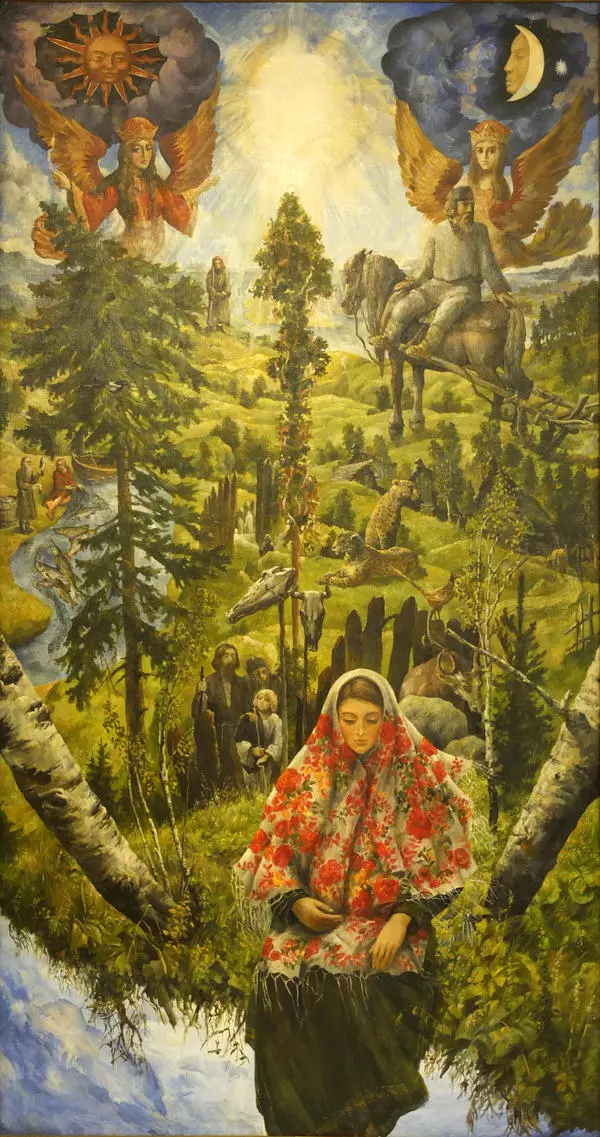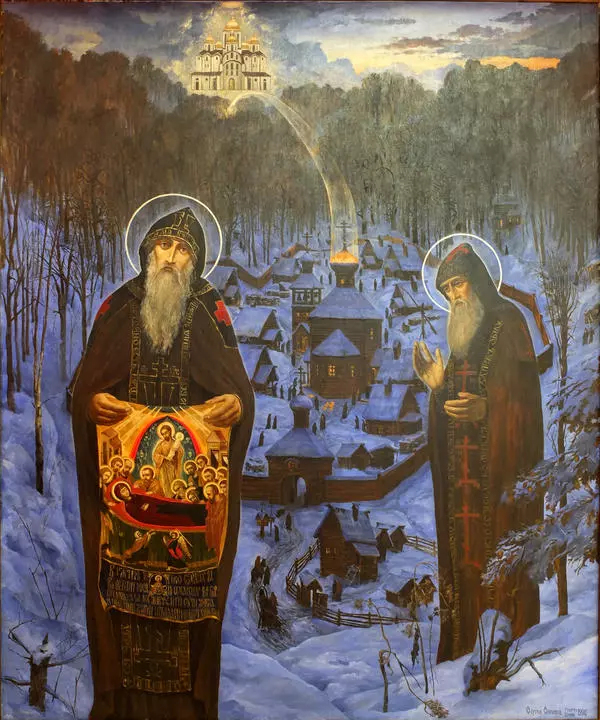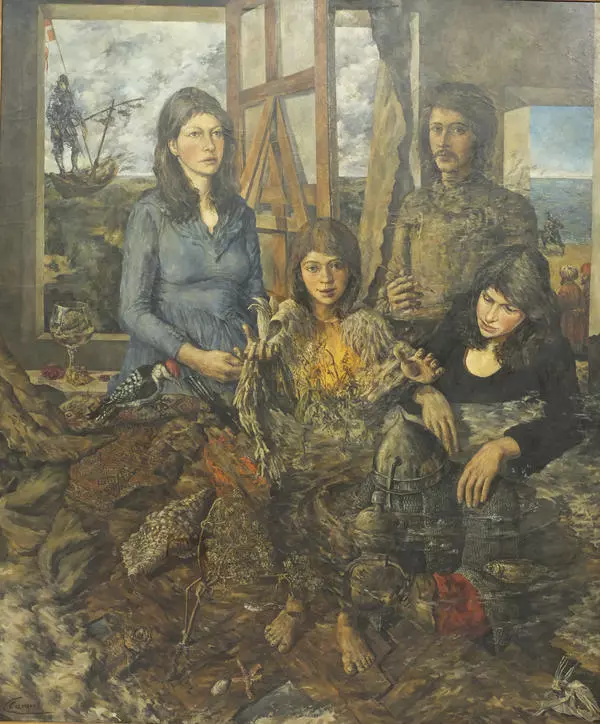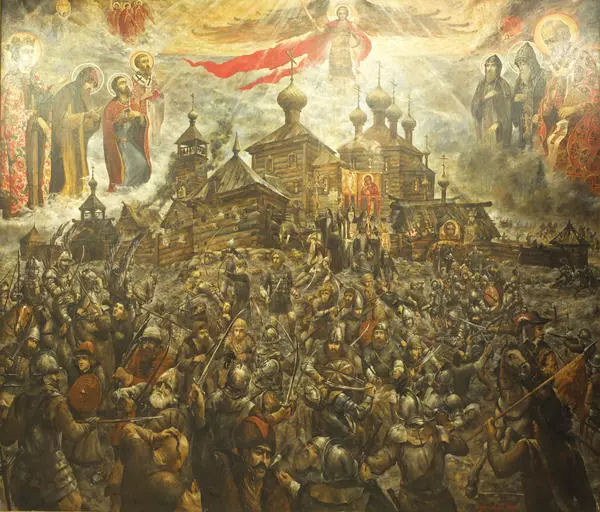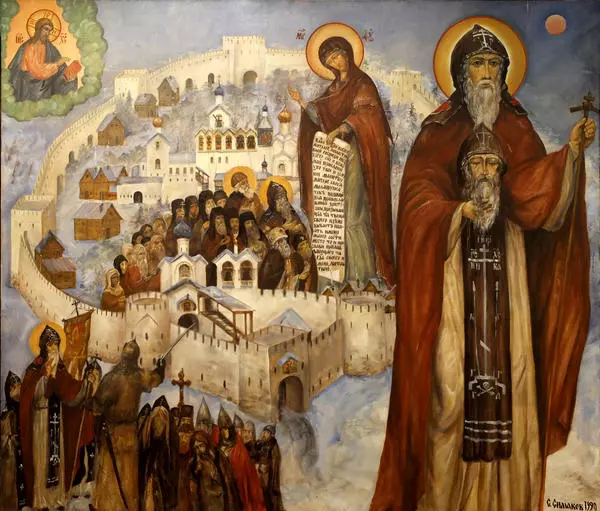Russian artist Sergey Simakov was born in Moscow in 1949. In 1972, he graduated from the Moscow Architectural Institute. At the time, Simakov took a great interest in Impressionism and Surrealism, became a member of the group Twenty Moscow Artists — an influential association of nonconformist artists who exhibited their works in the basement of house No. 28 on Malaya Gruzinskaya Street.
However, by the mid-1980s, Simakov turned to national Russian themes, which he considered inseparable from Orthodoxy. According to the artist himself, with the 1984-85 painting The Horse of Svyatovit, he summed up the pagan motifs that had often shown up in his previous works: by that time, he had painted several hundred small paintings and dozens of large-scale works.
The space of this canvas is filled with numerous images painted in a surrealistic manner — menacing pagan spirits, people, horses, birds. In the compositional centre is a figure of the Slavic deity Svyatovit on a white horse. Some Western Slavs believed in this god of war, victory and agriculture. Svyatovit opposed the evil Chernobog.
Sergey Simakov believed that the Baptism of Rus’ in 988 was not just a transition from paganism to Orthodoxy, but the moment of the birth of a new Orthodox people. At the same time, in his opinion, the Slavs had a presentiment that soon they were to turn to the one Christian God. This was reflected in Russian fairy tales, epics and songs. The image of Svyatovit on the canvas represents this foresight.
Another character that stands in stark contrast with background images is the girl in the foreground. Her figure is unnaturally twisted, her gaze fixed on the viewer. According to the artist’s intent, the girl personifies the naked human soul, her eyes are filled with suffering and hope for a different future. Thus, the artist expressed the soul’s need of the Christian faith.
However, by the mid-1980s, Simakov turned to national Russian themes, which he considered inseparable from Orthodoxy. According to the artist himself, with the 1984-85 painting The Horse of Svyatovit, he summed up the pagan motifs that had often shown up in his previous works: by that time, he had painted several hundred small paintings and dozens of large-scale works.
The space of this canvas is filled with numerous images painted in a surrealistic manner — menacing pagan spirits, people, horses, birds. In the compositional centre is a figure of the Slavic deity Svyatovit on a white horse. Some Western Slavs believed in this god of war, victory and agriculture. Svyatovit opposed the evil Chernobog.
Sergey Simakov believed that the Baptism of Rus’ in 988 was not just a transition from paganism to Orthodoxy, but the moment of the birth of a new Orthodox people. At the same time, in his opinion, the Slavs had a presentiment that soon they were to turn to the one Christian God. This was reflected in Russian fairy tales, epics and songs. The image of Svyatovit on the canvas represents this foresight.
Another character that stands in stark contrast with background images is the girl in the foreground. Her figure is unnaturally twisted, her gaze fixed on the viewer. According to the artist’s intent, the girl personifies the naked human soul, her eyes are filled with suffering and hope for a different future. Thus, the artist expressed the soul’s need of the Christian faith.



